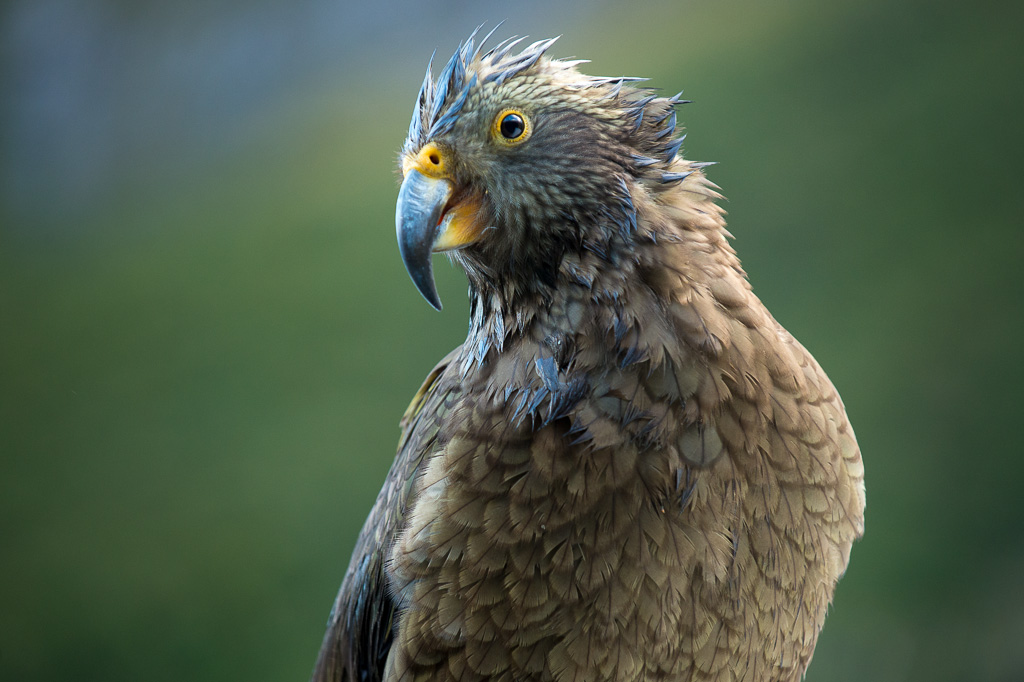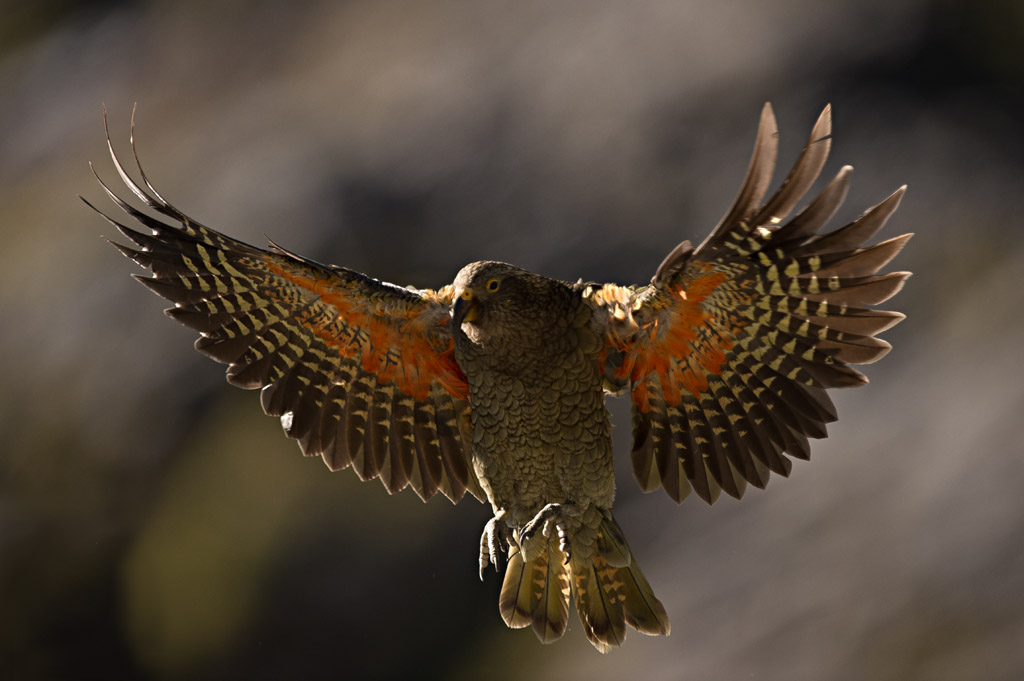Can Kea Keep Up with Climate Change?
It’s official! The kea has taken our Bird of the Year for 2017. Ellen Rykers investigates how warming temperatures could impact them.
While the kea’s antics may be more “court jester” than “monarch”, there’s no denying that kea are formidable kings and queens of the mountains (and our hearts).
But their reign as ruler of the Southern Alps could be in danger. Our feisty, curious mountain parrots are threatened on a number of fronts, and I’m sure it’s no surprise that climate change lurks among these dangers.

A juvenile kea (Photo by Craig McKenzie)
Kea are the world’s only alpine-dwelling parrots, with physiology specially adapted for a cold climate. But as that climate warms, their alpine home will shrink. Scientists predict that New Zealand’s alpine zone could shrink by up to 80%. Warmer and warmer temperatures mean trees are able to grow at higher and higher altitudes, edging out the semi-barren rocky slopes that make up the kea’s playground.
While kea do not live exclusively above the tree line – unlike their tiny rock wren neighbours – there’s no way to know how kea will adapt to this changing environment.
What we do know is that warmer temperatures will increase the range and numbers of predators. Like many of our native birds, kea are vulnerable to predation from introduced mammalian predators. Stoats and cats are known to kill adult females and chicks on the nest, while rats and possums hassle them in the nest and eat their eggs.
Climate change will increase the frequency of mast years, which causes a boom in predator numbers. These mast events occur when native beech forest and tussock grasslands drop huge amounts of seed at the same time. This increases the food supply for introduced predators and their numbers explode, decreasing the survival rates for kea dramatically.
Warming temperatures will also increase the range of introduced mammalian predators. Currently, these mammals are restricted to lower altitudes by the cool climate and snowfall higher up. As the stoats and rats ascend with rising temperatures, kea are at an increased risk of predation.
It’s not just being eaten that kea will have to worry about. It’s also what they’ll eat. As weather patterns shift, availability of food will change too. Fruits and flowers may bloom at different times, while insect populations may wax and wane at different rates. Kea are intelligent, but will this help them revamp their diets successfully?

Kea in flight (Photo by Craig McKenzie)
Kea are clever. But brainiac-smarts might not be enough to see these loveable clowns through climate change – not to mention the myriad other threats they face. There are only an estimated 3,000 to 7,000 kea remaining in the wild. This could be an issue, due to limited genetic variability. In general, smaller populations aren’t as good at adapting to change.
Crowning Bird of the Year is a fun opportunity to celebrate the birds that help make New Zealand such a fantastic natural place. But if we want to keep these taonga around for future generations, we have to address climate change.
